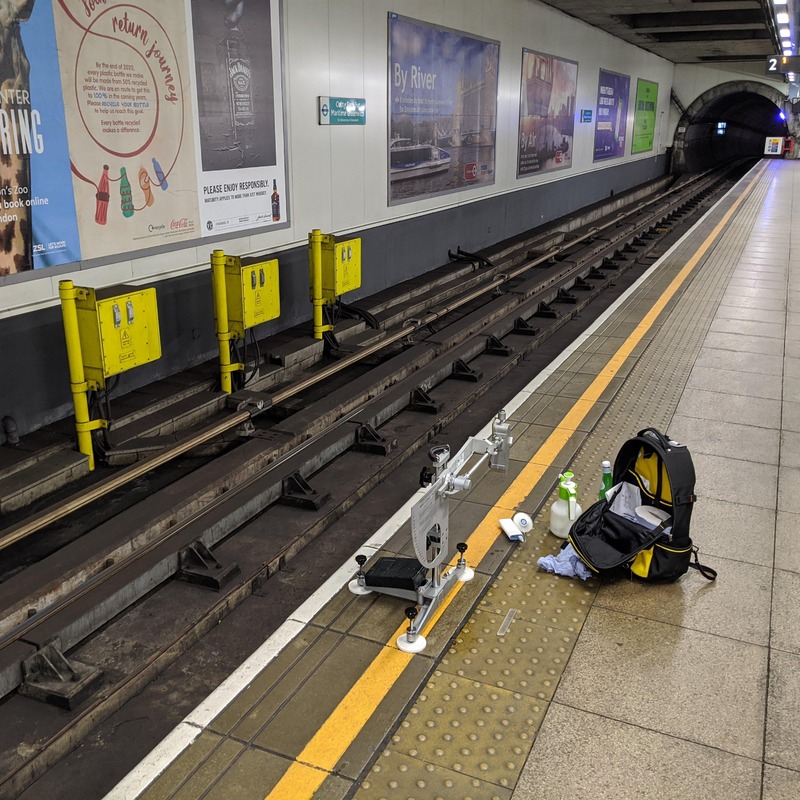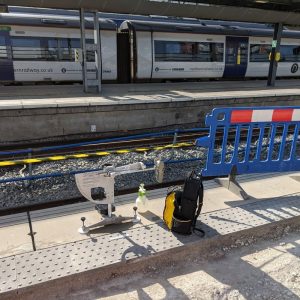Slips and falls are common safety concerns in train stations, where high foot traffic and diverse weather conditions can create slip hazards. For train station managers, preventing these incidents is essential to ensure passenger safety and comply with health and safety standards. One effective method for slip resistance testing is the Pendulum Test, a widely recognized approach for assessing the slip potential of various surfaces. Here’s how Pendulum testing can help you maintain a safe environment in your train station.
Why Preventing Slips in Train Stations Is Essential
Train stations are busy hubs that serve thousands of passengers daily, often in varying conditions. Rain, snow, and the natural wear and tear on flooring materials can increase the risk of slip-related accidents. Ensuring slip-resistant flooring isn’t just a regulatory requirement—it’s a proactive approach to reduce the risk of injuries, liability claims, and associated costs. Slip prevention is essential for maintaining a positive reputation, as passengers are more likely to trust and return to a station that prioritizes their safety.
What Is Pendulum Testing?
The Pendulum Test, also known as the British Pendulum Test (BPT), is an industry-standard method for measuring the slip resistance of flooring surfaces. Originally developed in the UK, this test has gained global recognition and is even recommended by the Health and Safety Executive (HSE). It measures the potential for a slip by simulating a foot striking the floor, giving you a precise slip-resistance value known as the Pendulum Test Value (PTV).
The test is straightforward and adaptable, suitable for indoor and outdoor surfaces in various conditions. With its ability to measure wet and dry surfaces, the Pendulum Test is a perfect fit for train stations, where exposure to weather elements is frequent.
The PTV can be interpreted as follows:
- 0–24: High slip potential
- 25–35: Moderate slip potential
- 36+: Low slip potential
A PTV of 36 or above is generally recommended to ensure a safe walking surface.
Benefits of Pendulum Testing in Train Stations
Implementing regular Pendulum slip testing offers several benefits for train station managers:
- Enhanced Safety: Regular slip resistance testing allows you to identify high-risk areas and take immediate action to mitigate hazards.
- Compliance: Pendulum testing ensures your station adheres to safety standards, reducing the likelihood of legal issues.
- Data-Driven Decisions: The PTV provides concrete data, enabling you to make informed decisions about flooring materials and treatments.
- Cost-Effective: By preventing slip incidents, you reduce the financial burden associated with accidents, insurance claims, and possible litigation.
Key Areas in Train Stations for Pendulum Testing
Certain areas in train stations are more prone to slip hazards, and Pendulum testing should be conducted regularly in these high-risk spots:
- Entranceways and Exits: Where weather elements like rain or snow can make surfaces slippery.
- Platforms: With exposure to the elements, platforms are especially prone to wet conditions.
- Stairs and Escalators: Ensuring these areas are slip-resistant is crucial for minimizing fall risk.
- Restrooms and Food Courts: High-traffic areas prone to spills and moisture buildup should be regularly tested.
Implementing a Slip-Resistant Strategy
To make the most of Pendulum testing, incorporate these additional steps in your slip-resistance strategy:
- Routine Testing: Schedule Pendulum testing at regular intervals and after any flooring maintenance or modifications.
- Document Results: Keep records of all test results to track slip resistance levels over time. This can be helpful for compliance audits and as evidence of your commitment to safety.
- Surface Treatments: For areas that score low in the PTV, consider applying anti-slip treatments to improve traction. Options include anti-slip coatings, mats, and non-slip tapes.
- Employee Training: Train staff to recognize and report potential slip hazards, and familiarize them with the Pendulum testing process to foster a culture of safety.









